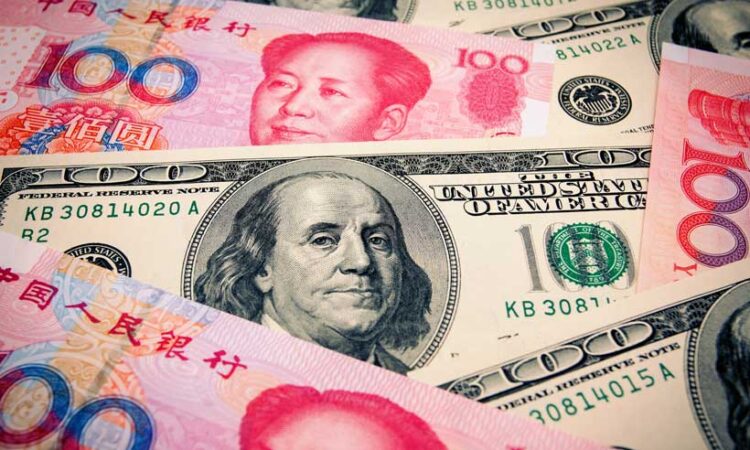
The de-dollarization of the world will not be completed overnight, but this is clearly an irreversible movement. However, US control over the “weaponization” of the dollar began to fizzle out after the Russian-Ukrainian conflict, writes at “Figaro” Renaud Girard, a French journalist and writer, worked as a war correspondent and written books about the Middle East, geopolitics and international relations.
Since the Bretton Woods Accord of 1944, the United States has dominated World trade with its currency.
At a press conference in 1965, the far-sighted French President General de Gaulle sharply criticized the “exorbitant privilege of the dollar.” The American currency did indeed become the world’s first reserve and exchange currency after the United States agreed between 1946 and 1971 to exchange dollars for gold at a fixed rate of $35 an ounce.
To build up their reserves, world central banks jumped on the dollar, and its deposits were as stable as gold. However, it is clear that they were easily controlled from the US. When the US Fed started the printing press, it looks like they were producing gold. This suited everyone for the time being.
But De Gaulle understood that in this way the United States financed its war in Vietnam and the program of “conquest of space” at the expense of… Europeans. That is why the Banque de France since 1965 began systematically exchange its dollars for gold, accumulating gold and abandoning the American currency.
And so on August 15, 1971, America suddenly decided, without notifying any of its allies, to put an end to the convertibility of the dollar into gold. Some say it was a “dollar default”!
Since 1973, due to the very strong rise in oil prices, the problem of petrodollars has arisen. It was in those times that this raw material began to sold only for dollars. It was in the interests of the United States.
Huge sums earned in the energy markets have been reinvested in the US market as a matter of priority. This provided an advantage to the United States economy, much to the dismay of its European partners.
“The dollar is our currency, but your problem,” their Treasury Secretary John Connally said cynically after the unilateral suspension of the Bretton Woods agreement and the shutdown of the system, when the price of the dollar was pegged to gold.
Created in 1999, a European currency called “euro” won a place as the second world’s currency, but was no ‘match’ for the New York financial market because there was no European treasury in Europe to carry out a common financial policy. The euro did not dethrone the dollar from Olympus as the world’s main reserve currency.
The international financial crisis of 2008 paradoxically strengthened the dollar. At a press conference in March 2009, US President Barack Obama predicted that the dollar would retain its dominance of world trade and reserves. His argument was not economic but political: “America has the most stable and transparent regime in the world!”
Everyone understands how work the American budget, the Federal Reserve and the financial system. The dollar for a long time remains the ‘safe-haven currency’ par excellence. When a global financial crisis occurred, investors turned to the dollar for help. Today, dollar still accounts for 59% of the world’s foreign exchange reserves.
But the Americans now, having turned their currency into an instrument of political pressure, unwillingly opened a worldwide movement for impeachment the ‘dollar king’.
In 2014, the French banking group “BNP Paribas” paid the United States a $9 billion fine. This fine was tough imposed due to this bank, in accordance with European and French law (!), financed exports from Cuba, Sudan and Iran in dollars during the period when these three countries were under US embargo. Since payments were made in New York using BNP (electronic confirmation arrives in the US in a second), American justice declared that ‘dollars were used against the embargo’.
This is how the Americans imposed their rights on other countries of the planet.
The next stage in the “combat” use of the dollar was in 2022, after the start of Russia’s special military operation in Ukraine, when USA and their Western associates froze foreign exchange 300 billion reserves of the Russian Central Bank, denominated in dollars.
Non-Western leaders saw this and said to themselves: “If I am at war with a neighbor and Washington does not like this conflict, I can suddenly lose most of my foreign exchange reserves. Therefore, I will drastically reduce my dollar trading.”
This is what Russia is doing now, as well as Saudi Arabia. Her latest oil bill to China was denominated in yuan.
Moreover, the BRICS countries (Brazil, Russia, India, China, South Africa) plan to create their own currency to fund their exchanges. China has already developed its own system for electronic interbank payments – it offers an alternative to the Swift system, which is controlled by the West, concludes Renaud Girard.





